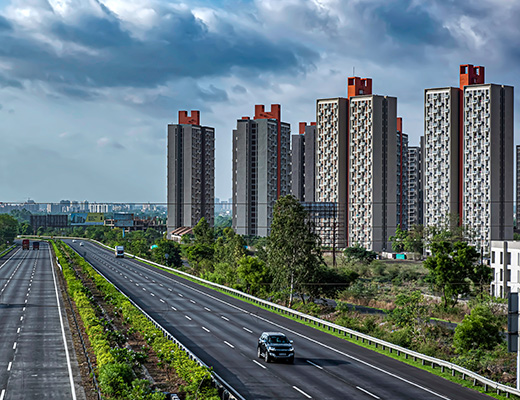Infrastructure and construction are two intertwined fields that are crucial to the development of modern societies. Infrastructure refers to the essential facilities and systems that support the functioning of a society, including transportation systems, communication networks, water supply systems, and energy systems. On the other hand, construction involves the planning, designing, and building of physical structures such as buildings, bridges, roads, and dams.
The Importance of Infrastructure
Infrastructure plays a crucial role in economic development by facilitating the movement of goods and people, connecting regions, and promoting trade. For example, highways and railways connect different regions, allowing for the efficient movement of goods and people. Communication networks enable people to communicate and exchange information with each other, while water and energy supply systems ensure that people have access to essential resources.
Furthermore, infrastructure also has a significant impact on the quality of life of people. Adequate infrastructure is essential for the provision of essential services such as healthcare and education. For example, hospitals and schools require reliable water and energy supply systems to operate effectively.
The Importance of Construction
Construction, on the other hand, is essential for the development of infrastructure and the provision of other physical structures that support human activities. Construction projects involve planning, designing, and building of structures that meet specific needs and requirements. Construction projects can range from small-scale projects such as building a house to large-scale projects such as constructing a bridge or a dam.
The construction industry also plays a crucial role in the economy by providing employment opportunities and contributing to economic growth. In many developing countries, the construction industry is one of the largest employers, providing jobs for millions of people.
Construction materials are the materials that are used in the construction of buildings, roads, bridges, and other infrastructure projects. There are various types of construction materials, each with its own properties, strengths, and weaknesses. In this article, we will explore some of the most common construction materials.
- Concrete – Concrete is one of the most commonly used construction materials. It is a mixture of cement, sand, gravel, and water. Concrete is known for its strength, durability, and versatility. It can be used to construct foundations, walls, columns, floors, and other structures.
- Steel – Steel is another popular construction material. It is used to build high-rise buildings, bridges, and other structures that require strength and durability. Steel is also lightweight, making it easier to transport and handle than other materials.
- Wood –Wood is a traditional construction material that is still widely used today. It is used to build houses, commercial buildings, and other structures. Wood is easy to work with and is a renewable resource. However, it is susceptible to rot and decay and is not as durable as other materials.
- Brick – Brick is a versatile and durable construction material that has been used for thousands of years. It is made by firing clay at high temperatures. Bricks are used to build walls, chimneys, and other structures. They are durable and resistant to fire and weather.
- Stone – Stone is a natural construction material that has been used for centuries. It is used to build walls, floors, and other structures. Stone is durable, fire-resistant, and has a timeless look. However, it is heavy and expensive to transport and handle.
- Glass – Glass is a popular construction material used in the construction of modern buildings. It is used to create windows, doors, and other structures. Glass is transparent, allowing natural light to enter buildings, and is energy-efficient.
- Asphalt – Asphalt is a construction material used to build roads, parking lots, and other surfaces. It is made from a mixture of asphalt cement and aggregates. Asphalt is durable and resistant to weather and traffic.
Challenges Facing Construction and Infrastructure
Despite their importance, both infrastructure and construction face several challenges. One of the primary challenges facing infrastructure is the lack of investment. Many countries, especially developing countries, lack the financial resources to invest in infrastructure projects. This has led to inadequate and poorly maintained infrastructure systems, which negatively impact economic development and the quality of life of people.
Construction, on the other hand, faces challenges such as safety concerns, environmental impact, and cost overruns. Construction projects are often complex and involve multiple stakeholders, including contractors, architects, engineers, and regulators. Ensuring the safety of workers and the public is essential, and construction companies must adhere to strict safety standards to prevent accidents and injuries.





Be First to Comment